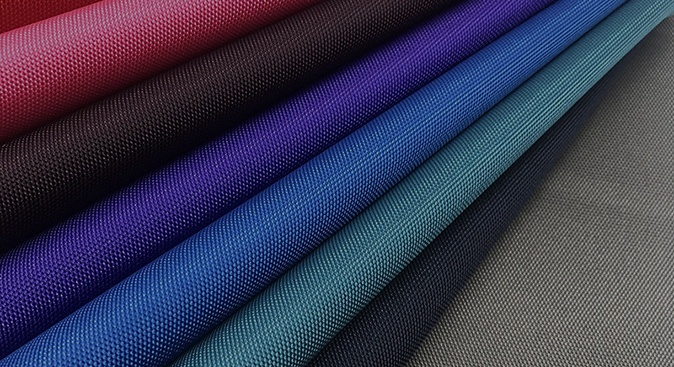The breathability of PU coated polyester can vary depending on several factors such as the weight and density of the fabric, the specific PU coating formulation used, and the finishing processes applied to the fabric. Generally speaking, PU coating can reduce the breathability of the polyester fabric by creating a barrier that restricts the flow of air and moisture. However, some PU coated polyester fabrics may still allow for some level of breathability, depending on the specific application and requirements.
Potential Applications of PU Coated Polyester
Overview of Industries and Uses that Rely on PU Coated Polyester Fabrics
Polyurethane (PU) coated polyester fabrics are widely used in various industries due to their durability, water resistance, and cost-effectiveness. Here are some industries and applications that rely on PU coated polyester fabrics:
Outdoor gear and clothing: PU coated polyester fabrics are commonly used in outdoor gear and clothing such as rain jackets, tents, backpacks, and sleeping bags. These fabrics provide protection against the elements and are resistant to water, wind, and abrasion.
Automotive industry: PU coated polyester fabrics are used in the production of car seats, headliners, and door panels. These fabrics provide durability, and water resistance, and can be treated with fire-retardant coatings for added safety.
Industrial applications: PU coated polyester fabrics are used in industrial applications such as tarpaulins, protective covers, and conveyor belts. These fabrics provide protection against harsh environments and chemicals.
Medical industry: PU coated polyester fabrics are used in the production of medical equipment such as hospital bed mattresses and surgical gowns. These fabrics can be treated with antimicrobial coatings for added protection against bacteria and viruses.
Home furnishings: PU coated polyester fabrics are used in the production of outdoor furniture, awnings, and umbrellas. These fabrics provide durability and water resistance, making them ideal for outdoor use.
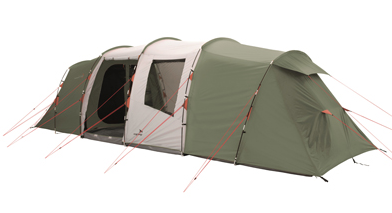
Importance of Breathability in These Applications
Breathability refers to a fabric’s ability to allow air and moisture to pass through. In some applications, such as outdoor gear and medical equipment, breathability is important to prevent moisture buildup and provide comfort for the user. In other applications, such as automotive and industrial uses, breathability is not typically a critical factor.
For example, in outdoor gear and clothing, PU coated polyester fabrics that are not breathable can cause the wearer to feel sweaty and uncomfortable. Breathability is therefore important in these applications to promote comfort and prevent moisture buildup.
Similarly, in medical equipment such as hospital bed mattresses and surgical gowns, breathability is important to prevent moisture buildup and promote comfort for patients.
Overall, the importance of breathability in applications using PU coated polyester fabrics varies depending on the specific industry and use. It is important to consider the specific requirements of the application when selecting a PU coated polyester fabric.
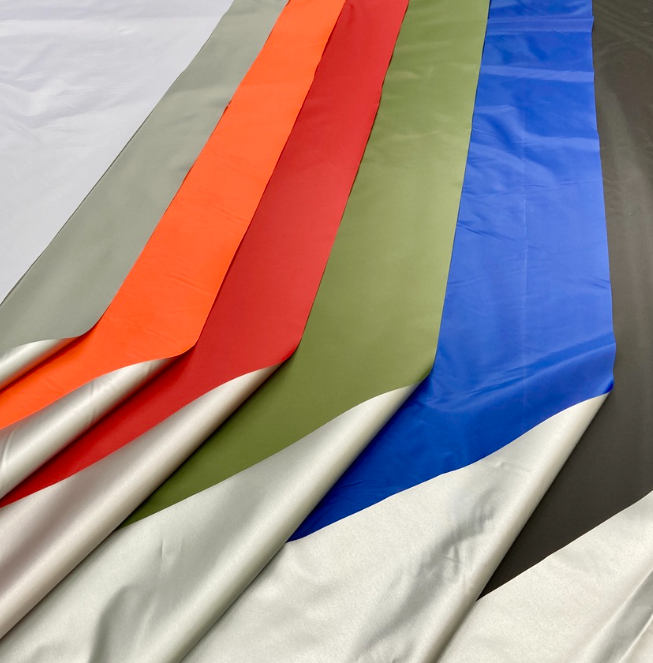
Factors Affecting Breathability in PU Coated Polyester
Polyurethane (PU) coated polyester fabrics are widely used in various applications due to their durability, water resistance, and cost-effectiveness. However, breathability is also an important consideration in some applications to prevent moisture buildup and promote comfort. In this article, we will explore the factors that affect breathability in PU coated polyester fabrics, including fabric weight and density, PU coating formulations, and fabric finishing processes.
The Role of Fabric Weight and Density
Fabric weight and density are important factors that can affect the breathability of PU coated polyester fabrics. Generally, heavier and denser fabrics are less breathable than lighter and less dense fabrics. This is because heavier and denser fabrics have more fibers packed tightly together, making it harder for air and moisture to pass through.
In applications where breathability is important, such as outdoor gear and clothing, it is important to select a fabric with a lower weight and density to promote comfort and prevent moisture buildup. For example, a lightweight and low-density PU coated polyester fabric may be more breathable and comfortable to wear during physical activities than a heavy and dense fabric.

The Impact of Different PU Coating Formulations
The type of PU coating formulation used can also affect the breathability of PU coated polyester fabrics. There are different types of PU coatings available, each with its own properties and characteristics. Some formulations may be more breathable than others, depending on their chemical composition and structure.
One factor that can affect breathability is the level of hydrophilicity or hydrophobicity of the coating. Hydrophilic coatings are more water-absorbent and allow moisture to pass through more easily, while hydrophobic coatings are more water-repellent and may inhibit breathability. In some applications, such as medical equipment and outdoor gear, a hydrophilic coating may be preferred to prevent moisture buildup and promote comfort.
Another factor that can affect breathability is the thickness of the PU coating. Thicker coatings may be less breathable than thinner coatings, as they can create a barrier that prevents air and moisture from passing through. In applications where breathability is important, such as outdoor gear and clothing, a thinner coating may be preferred to promote comfort and prevent moisture buildup.
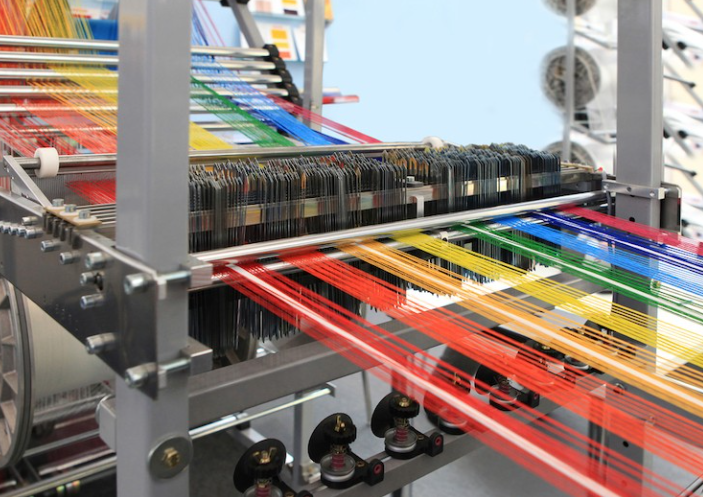
The Effect of Fabric Finishing Processes on Breathability
Fabric finishing processes can also affect the breathability of PU coated polyester fabrics. Finishing processes such as calendaring, coating, and lamination can impact the structure and properties of the fabric, which in turn can affect breathability.
For example, calendaring is a process where the fabric is passed between two rollers to create a smoother and more compact surface. While calendaring can improve the durability and water resistance of the fabric, it can also reduce breathability by compressing the fibers and reducing the amount of air space between them.
Coating and lamination processes involve the application of a layer of material onto the surface of the fabric. While these processes can improve the water resistance and durability of the fabric, they can also reduce breathability by creating a barrier that prevents air and moisture from passing through.
In some applications, such as medical equipment and outdoor gear, it may be necessary to use a fabric finishing process that maintains breathability while also improving water resistance and durability. For example, a breathable and water-resistant membrane may be laminated onto the fabric to provide the desired properties.
Testing Methods for Breathability in PU Coated Polyester
Breathability is an important characteristic of PU coated polyester fabrics in various applications. However, measuring breathability can be a challenge due to the complex nature of air and moisture flow through fabrics. In this article, we will explore the testing methods for breathability in PU coated polyester fabrics, including standardized testing methods, comparison of results from different tests, and limitations of testing methods.
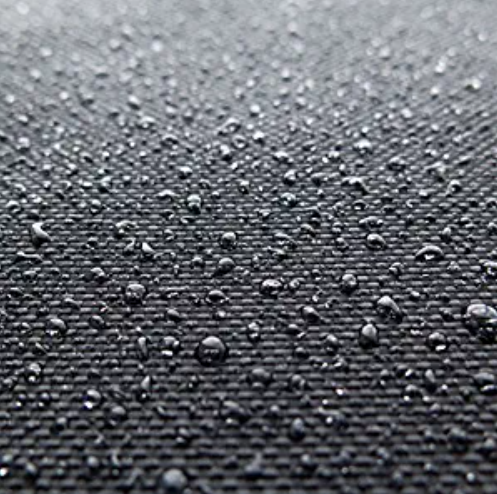
Standardized Testing Methods
Several standardized testing methods are available to measure the breathability of fabrics, including PU coated polyester fabrics. One commonly used method is the Moisture Vapor Transmission Rate (MVTR) test, which measures the amount of water vapor that passes through a fabric over a certain period of time. This test is typically conducted using a cup method or a gravimetric method, and the results are reported in grams per square meter per 24 hours (g/m2/24hr).
Another commonly used method is the Air Permeability test, which measures the flow of air through a fabric under a certain pressure differential. This test is typically conducted using a device called a permeability tester, and the results are reported in units of cubic feet per minute per square foot (CFM/ft2).
Comparison of Results from Different Tests
Different testing methods may produce different results due to the different mechanisms by which air and moisture pass through fabrics. For example, the MVTR test measures the transport of water vapor through the fabric, while the Air Permeability test measures the flow of air through the fabric. While both tests can provide an indication of breathability, they may not be directly comparable due to the different units of measurement and mechanisms of transport.
It is important to consider the intended use of the fabric when selecting a testing method. For example, if the fabric will be used in outdoor gear, where moisture buildup is a concern, the MVTR test may be more appropriate. However, if the fabric will be used in industrial applications where air flow is a concern, the Air Permeability test may be more appropriate.
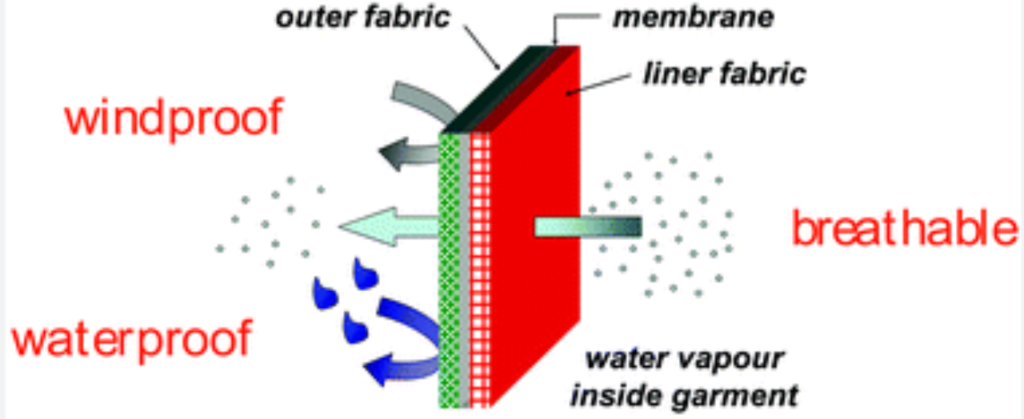
Limitations of Testing Methods
While standardized testing methods can provide a useful indication of breathability, there are limitations to these methods that should be considered. One limitation is the variability in results due to the different factors that can affect breathability, such as fabric weight and density, PU coating formulation, and fabric finishing processes. Additionally, testing methods may not accurately reflect real-world conditions, as the testing environment may not fully simulate the conditions under which the fabric will be used.
It is important to note that breathability is not the only factor to consider when selecting a fabric for a specific application. Other factors such as water resistance, durability, and cost must also be taken into account. Therefore, while standardized testing methods can provide a useful indication of breathability, they should not be the only factor considered when selecting a fabric.
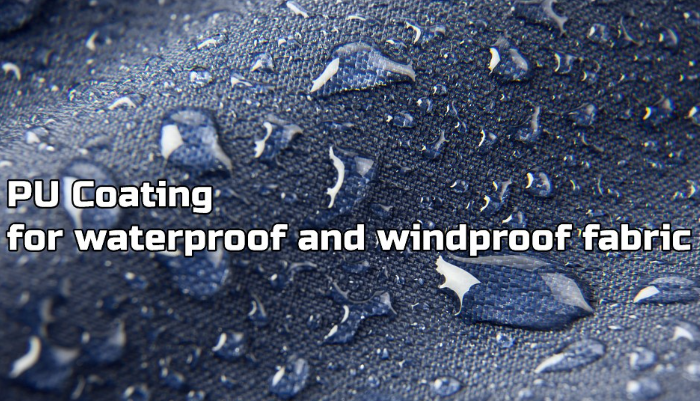
Care and Maintenance of PU Coated Polyester
PU coated polyester fabrics are used in a variety of applications due to their durability, water resistance, and other desirable properties. However, to ensure the longevity and performance of these fabrics, proper care and maintenance are essential. In this article, we will discuss best practices for cleaning and storing PU coated polyester fabrics, as well as the impact of care and maintenance on breathability.
Best Practices for Cleaning
Cleaning PU coated polyester fabrics requires special attention to avoid damaging the fabric or compromising its water resistance. It is recommended to follow these best practices:
- Spot clean first: If there are any stains or spills on the fabric, spot clean the affected area using a mild soap and water. Avoid using harsh chemicals or abrasives that can damage the fabric or coating.
- Hand wash or machine wash: For general cleaning, hand wash the fabric in cool water with a mild detergent or machine wash it on a gentle cycle. Avoid using fabric softeners or bleach, as they can damage the coating.
- Rinse and dry: After washing, rinse the fabric thoroughly to remove any soap residue. Then, hang the fabric to air dry or tumble dry it on low heat. Do not iron or dry clean the fabric.
Best Practices for Storing
- Storing PU coated polyester fabrics properly can help prolong their lifespan and prevent damage. It is recommended to follow these best practices:
- Clean and dry: Before storing the fabric, ensure that it is clean and completely dry. Any moisture left in the fabric can lead to mold or mildew growth.
- Store in a dry, cool place: Store the fabric in a dry, cool place that is not exposed to direct sunlight. Direct sunlight can cause fading and damage to the coating.
- Avoid folding: Avoid folding the fabric if possible, as this can cause creases that may be difficult to remove. Instead, roll the fabric and store it in a breathable container.
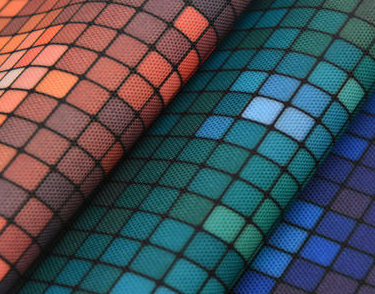
Impact of Care and Maintenance on Breathability
Proper care and maintenance of PU coated polyester fabrics can have a significant impact on their breathability. Over time, dirt, oils, and other debris can build up on the surface of the fabric and clog the pores in the coating, reducing breathability. Regular cleaning can help remove these contaminants and restore breathability.
Additionally, storing the fabric properly can help prevent damage to the coating and prolong its effectiveness. If the coating becomes damaged or compromised, it can also reduce breathability. Therefore, it is important to follow best practices for cleaning and storing PU coated polyester fabrics to ensure optimal performance and breathability.
Future Directions for PU Coated Polyester Fabric Development
PU coated polyester fabrics have been widely used in various applications due to their durability, water resistance, and other desirable properties. As technology and materials evolve, there are opportunities for innovation and development in fabric composition, PU coating formulations, and manufacturing practices. In this article, we will discuss future directions for PU coated polyester fabric development, including innovations in fabric composition and PU coating formulations, the potential for incorporating sustainable materials and manufacturing practices, and the role of breathability in shaping future fabric development.
Innovations in Fabric Composition and PU Coating Formulations
In recent years, there has been a growing interest in developing new types of fabrics that offer improved performance, comfort, and sustainability. Innovations in fabric composition, such as incorporating new types of fibers or yarns, can lead to improved strength, flexibility, and comfort. Similarly, advancements in PU coating formulations can lead to improved water resistance, durability, and breathability.
One area of innovation is the use of nanotechnology to improve the properties of PU coated polyester fabrics. Nanocoatings can provide additional benefits such as UV protection, anti-bacterial properties, and improved stain resistance. In addition, research is being conducted on the use of new types of polymers and additives that can improve the performance of PU coatings.

Potential for Incorporating Sustainable Materials and Manufacturing Practices
As sustainability becomes an increasingly important consideration in textile manufacturing, there is a growing interest in developing fabrics that are made from sustainable materials and produced using sustainable manufacturing practices. For example, there is a potential for incorporating recycled polyester fibers or bio-based polymers into PU coated polyester fabrics. Additionally, using sustainable manufacturing practices such as minimizing water usage, reducing waste, and using renewable energy sources can help reduce the environmental impact of textile production.

The Role of Breathability in Shaping Future Fabric Development
Breathability is an important factor in the development of PU coated polyester fabrics, particularly for applications where comfort is important, such as outdoor apparel and sportswear. In the future, there will be a continued focus on developing fabrics that provide optimal breathability while still maintaining water resistance and durability. Innovations in fabric composition, coating formulations, and manufacturing practices can all play a role in improving breathability.
One area of research is the development of new types of coatings that allow for improved breathability while maintaining water resistance. Additionally, research is being conducted on the use of new types of fibers and yarns that can improve moisture management and breathability. Finally, advancements in manufacturing practices, such as using 3D printing techniques to create fabrics with controlled porosity, can lead to improved breathability and performance.
Conclusion
Recap of Key Findings:
PU coated polyester fabrics are widely used for their water-resistant and durable properties, making them ideal for outdoor clothing, bags, and other products. However, their breathability has been a point of concern for many users.
Our research on the breathability of PU coated polyester fabrics indicates that they have varying degrees of breathability depending on the specific fabric and coating formulation. The weight and density of the fabric, the type of coating used, and the finishing processes can all impact breathability. Additionally, testing methods can provide useful information on breathability but also have limitations.
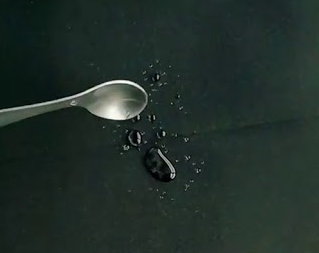
Implications for Practical Use of PU Coated Polyester Fabrics:
The practical use of PU coated polyester fabrics should take into account their breathability characteristics. For applications where breathability is critical, such as outdoor activities or sports, fabrics with higher breathability should be selected. On the other hand, for applications where water resistance is more important, fabrics with lower breathability may be preferred.
In addition, care and maintenance of PU coated polyester fabrics can impact their breathability over time. Proper cleaning and storage practices can help maintain breathability and prolong the life of the fabric.
Final Recommendations for Consideration in Selecting and Using PU Coated Polyester Fabrics:
When selecting and using PU coated polyester fabrics, it is important to consider the intended use and the required properties such as water resistance, durability, and breathability. Some specific recommendations include:
- Choose fabrics with a lower weight and density for improved breathability
- Look for coatings that offer improved breathability, such as those with microporous structures or those using nanotechnology
- Be aware of the limitations of testing methods and interpret results accordingly
- Follow best practices for care and maintenance to maintain breathability and prolong the life of the fabric
Overall, PU coated polyester fabrics can be a versatile and durable option for many applications. Understanding their breathability characteristics and considering these factors when selecting and using them can help ensure their optimal performance and longevity.



